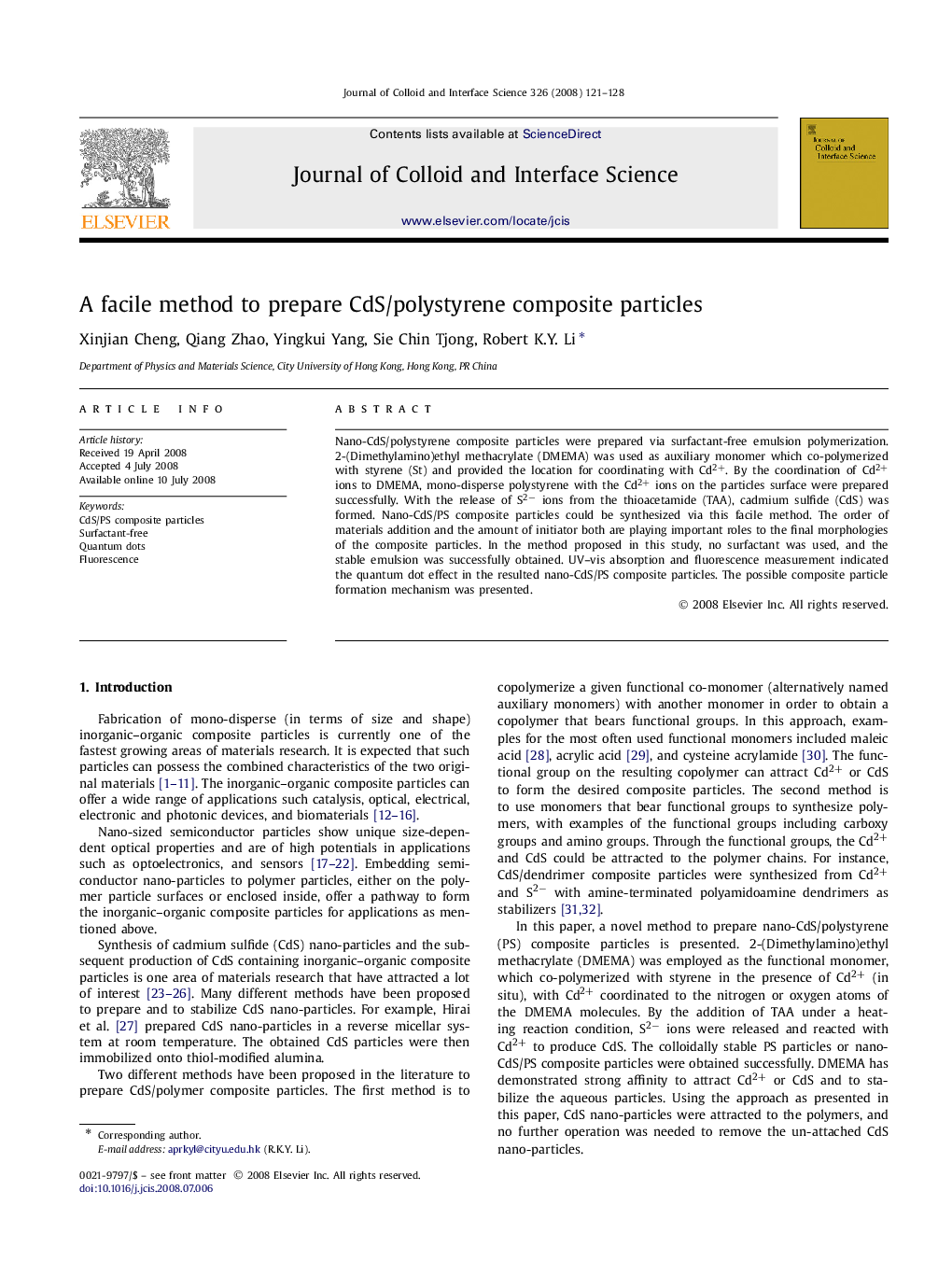| Article ID | Journal | Published Year | Pages | File Type |
|---|---|---|---|---|
| 610881 | Journal of Colloid and Interface Science | 2008 | 8 Pages |
Nano-CdS/polystyrene composite particles were prepared via surfactant-free emulsion polymerization. 2-(Dimethylamino)ethyl methacrylate (DMEMA) was used as auxiliary monomer which co-polymerized with styrene (St) and provided the location for coordinating with Cd2+. By the coordination of Cd2+ ions to DMEMA, mono-disperse polystyrene with the Cd2+ ions on the particles surface were prepared successfully. With the release of S2− ions from the thioacetamide (TAA), cadmium sulfide (CdS) was formed. Nano-CdS/PS composite particles could be synthesized via this facile method. The order of materials addition and the amount of initiator both are playing important roles to the final morphologies of the composite particles. In the method proposed in this study, no surfactant was used, and the stable emulsion was successfully obtained. UV–vis absorption and fluorescence measurement indicated the quantum dot effect in the resulted nano-CdS/PS composite particles. The possible composite particle formation mechanism was presented.
Graphical abstractCdS/polystyrene composite particles synthesized by surfactant-free emulsion polymerization method.Figure optionsDownload full-size imageDownload as PowerPoint slide
